At PXP we are an Exercise Physiology clinic. This means in Australia that our Accredited Exercise Physiologists (AEPs) are allied health professionals (1). In this article I want to elaborate on the difference between performance training and rehabilitation training in a private practice setting. My aim for this article is for you to understand why we do what we do, and to help the reader make good choices for themselves.
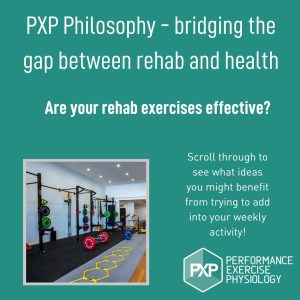
We at PXP feel that the dividing line between where rehab ends, and where health & performance starts, is far too great in Australia. This means either that you end up stuck in low level exercise programs for too long and never reach your activity goals or that the rehabilitation exercises given byyour therapist are simply not effective. So in writing this we believe there are some key elements that can be added into exercise rehabilitation (depending on the specific needs of the individual) for better outcomes.
Elements from Exercise Science, Pain Science & Health Science:
- Osteogenic & hypertrophic exercise principles (this means muscle and bone stimulus). We want to prevent the diagnosis of osteopenia/osteoporosis and sarcopenia for as long as possible sowe can help people age well. (2, 3)
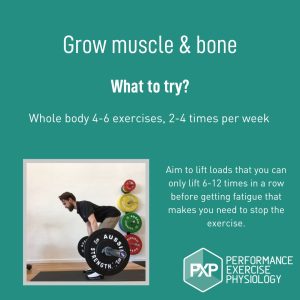
- Cardiovascular exercise principles (heart and lung health). Many people with injuries and pain are unnecessarily avoiding strenuous activity and exercise that our bodies need in order to stay healthy. (4)
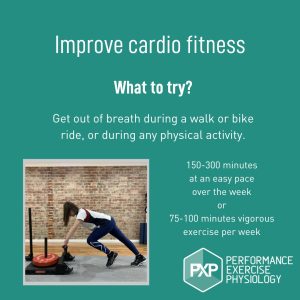
- Progressive overload (planned increases in exercise difficultyover time). The idea of being given apage of 5-10 exercises by your therapist and then doing them exactly the same for months and months is not effective. (5)
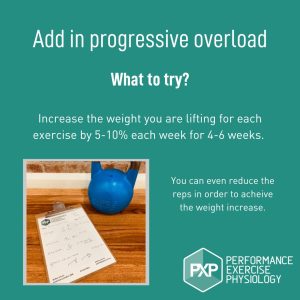
- Periodised training (not doing the exact same thing all the time). Working on the same exercise routine year round is great especially from a behavioural point of view however having smaller short term goals and periodising your rehabilitation helps to bridge the gap between recoveryand performance. (6)
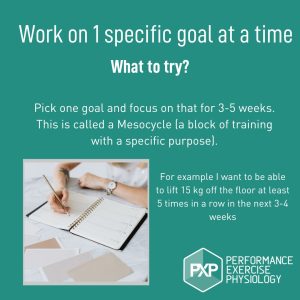
- Metabolic health (Insulin sensitivity, cholesterol, blood pressure, waist circumference). We have more and more research showing the impact of inflammation and poor metabolic health on chronic pain, mental illness and morbidity. (7, 8)
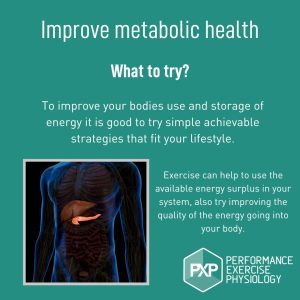
- Mental health (Social support, financial stress, beliefs, coping strategies and serious psychological diagnoses). Mental health and physical health are talked about in a way that implies they are separate. The emotional state and thoughts of the human brain directly change behaviour and nervous system reactions (outputs such as pain and hunger) and in concert when our body tissues are damaged or diseased it leads directly to changes in emotional state and thoughts. (9)
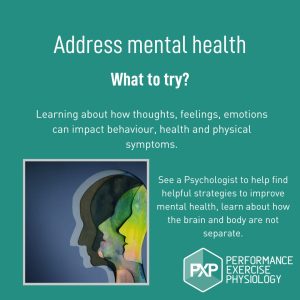
- Food & hydration (what you put in your body). It seems common sense and yet the little things that become normalised in our diet and in our lifestyle really do change health drastically. Things like alcohol, dehydration, fad dieting, and pseudoscience in general have become commonplace in our society. (10)
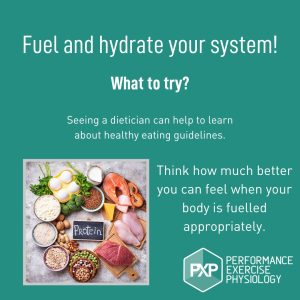
- Sleep quality (how much sleep and how restful it is). Sleep quality is an under looked at part of recovering from illness and injury. (11)
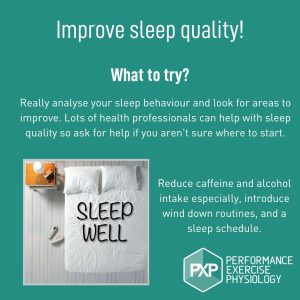
Approaches that deal purely with the body as a mechanical machine (as opposed to a biological and psychosocial person) (12), only strengthening one or two “core” muscles in isolation (13), treating based on MRI and Xray results (14), scapegoating posture & ergonomics (15), and not providing evidence based guidelines (16) leaves huge gaps and barriers within rehabilitation that are too large for individuals to traverse on their own.
In combination with exercise and education we believe that the gap between rehabilitation and performance in terms of the exercise prescription itself can be reduced almost entirely and make setting realistic client centred goals much easier. While rehabilitating your total knee replacement why not get your upper body really strong? Why not make sure your blood pressure is under control?
Human spines are strong.
A good example is the common beliefs around lower back pain in society. The main narrative of the lower back and spine in modern society even without injury or pain is “protect your back”, “offload your back”, “don’t feel it in your back”, “bend your knees not your back”, “don’t lift that you will hurt yourself”. What this pessimistic narrative means is that when people have back pain they don’t want to exercise their lower back at all and instead want to offload and avoid using their lower spine discs, joints and muscles. This narrative can make it a very slow process for a health professional to firstly show somebody that the exercise guidelines for lower back pain aren’t really different at all to normal exercise guidelines, and that it may be beneficial to directly exercise and target the lower back with your physical activity in order to strengthen and build confidence in your body again. (17).
Your health professional should focus on you as a whole person!
Which leads me to my last point and the purpose of this article. How do we delineate a healthcare based model and a performance or fitness based model in a private practice clinic?. The answer is very complex overall but simple in practice. We treat the person in front of us, and find out what expectations they have of us! This simple approach allows us to target the consultations into an outcome that meets what people want. Most people with a specific complaint like lower back pain or high blood pressure are wanting an explanation and opinion on how exercise can be part of their treatment and recovery. This comes under the scope of an AEP as mentioned above. Some people want and require accountability and long term exercise support. This then comes within the scope of practice of an Exercise Scientist (AES) (18). Once the initial complaint is considered treatable with exercise and the person is able to self manage or wants to be trained personally with a qualified professional often people can move into more regular exercise much earlier than they thought.
So in summary Performance X Physiology (PXP) is set up to address this gap between working on your injury and to working on your health, and then heading towards fitness and activity goals like getting back to sport or preparing for your next hike. The equipment we have in our clinic is mostly weights but there is a lot you can do without any equipment at all. We are able to work with all people from very complex illness and injury to elite athletes. We can also help people with strength and conditioning coaching progressing them from acute or chronic injuries back to full performance training.
What is PXP to you?
For some people PXP can be a stepping stone back to regular exercise goals and for others it may be a destination for ongoing exercise support. Either way we think we can help anyone with their exercise and lifestyle questions and we hope to be a positive influence in the health and fitness communities within Australia.
Written by:
Kyle Richardson, AEP
References & Links
(2) https://healthybonesaustralia.org.au/your-bone-health/exercise-bone-health/
(3) Liu, P., Hao, Q., Hai, S., Wang, H., Cao, L., & Dong, B. (2017). Sarcopenia as a predictor of all-cause mortality among community-dwelling older people: A systematic review and meta-analysis. J, Maturitas, Vol 103, 16-22. https://pubmed.ncbi.nlm.nih.gov/28778327/
(4) https://msk.org.au/exercise
(5) https://en.wikipedia.org/wiki/Progressive_overload
(6) Hoover, D.L., VanWye, W.R., & Judge, L.W. (2016). Periodization and physical therapy: Bridging the gap between training and rehabilitation. Physical Therapy in Sport, Vol 18, 1-20. https://doi.org/10.1016/j.ptsp.2015.08.003
(7) Pico-Espinosa, O.J., Skillgate, E., Tettamanti, G., Lager, A., & Holm, L.W. (2017). Diabetes mellitus and hyperlipidaemia as risk factors for frequent pain in the back, neck and/or shoulders/arms among adults in Stockholm 2006 to 2010 – Results from the Stockholm Public Health Cohort. Scandinavian Journal of Pain, Vol 15, 1-7. https://pubmed.ncbi.nlm.nih.gov/28850330/
(8) Loeffler, A., & Steptoe, A. (2021). Bidirectional longitudinal associations between loneliness and pain, and the role of inflammation. Journal of the international association for the study of pain, Vol 162(3), 930-937. https://pubmed.ncbi.nlm.nih.gov/32960533/
(10) Brain, K., Burrows, T.L., Rollo, M.E., Chai, L.K., Clarke, E.D., Hayes, C., Hodson, F.J., & Collins, C.E. (2019). A systematic review and meta-analysis of nutrition interventions for chronic noncancer pain. Journal of Human Nutrition and Dietetics, Vol 32(2), 198-225. https://pubmed.ncbi.nlm.nih.gov/30294938/
(11) Finan, P.H., Goodin, B.R., & Smith, M.T., (2014). The association of sleep and pain: An update and a path forward. Journal of Pain, Vol 14(12), 1539–1552. https://www.ncbi.nlm.nih.gov/pmc/articles/PMC4046588/
(12) Booth, J., Moseley, G. L., Schiltenwolf, M., Cashin, A., Davies, M., & Hübscher, M. (2017). Exercise for chronic musculoskeletal pain: A biopsychosocial approach. Musculoskeletal Care, 15(4), 413–421. https://pubmed.ncbi.nlm.nih.gov/28371175/
(13) Smith, B.E., Littlewood, C. & May, S. (2014). An update of stabilisation exercises for low back pain: a systematic review with meta-analysis. BMC Musculoskelet Disord 15, 416. https://doi.org/10.1186/1471-2474-15-416 https://bmcmusculoskeletdisord.biomedcentral.com/articles/10.1186/1471-2474-15-416
(14) Foster, N. E., Anema, J. R., Cherkin, D., Chou, R., Cohen, S. P., Gross, D. P., Ferreira, P. H., Fritz, J. M., Koes, B. W., Peul, W., Turner, J. A., Maher, C. G., & Lancet Low Back Pain Series Working Group (2018). Prevention and treatment of low back pain: evidence, challenges, and promising directions. Lancet (London, England), 391(10137), 2368–2383. https://doi.org/10.1016/S0140-6736(18)30489-6 https://pubmed.ncbi.nlm.nih.gov/29573872/
(15) Mahmoud, N. F., Hassan, K. A., Abdelmajeed, S. F., Moustafa, I. M., & Silva, A. G. (2019). The Relationship Between Forward Head Posture and Neck Pain: a Systematic Review and Meta-Analysis. Current reviews in musculoskeletal medicine, 12(4), 562–577. https://doi.org/10.1007/s12178-019-09594-y
(16) Stevans, J. M., Delitto, A., Khoja, S. S., Patterson, C. G., Smith, C. N., Schneider, M. J., Freburger, J. K., Greco, C. M., Freel, J. A., Sowa, G. A., Wasan, A. D., Brennan, G. P., Hunter, S. J., Minick, K. I., Wegener, S. T., Ephraim, P. L., Friedman, M., Beneciuk, J. M., George, S. Z., & Saper, R. B. (2021). Risk Factors Associated With Transition From Acute to Chronic Low Back Pain in US Patients Seeking Primary Care. JAMA network open, 4(2), e2037371. https://doi.org/10.1001/jamanetworkopen.2020.37371
(17) van Tulder, M., Becker, A., Bekkering, T., Breen, A., del Real, M. T., Hutchinson, A., Koes, B., Laerum, E., Malmivaara, A., & COST B13 Working Group on Guidelines for the Management of Acute Low Back Pain in Primary Care (2006). Chapter 3. European guidelines for the management of acute nonspecific low back pain in primary care. European spine journal : official publication of the European Spine Society, the European Spinal Deformity Society, and the European Section of the Cervical Spine Research Society, 15 Suppl 2(Suppl 2), S169–S191. https://doi.org/10.1007/s00586-006-1071-2
(18) https://www.essa.org.au/Public/Consumer_Information/What_is_an_Accredited_Exercise_Scientist_.aspx
